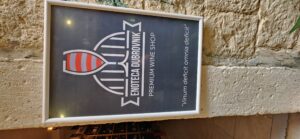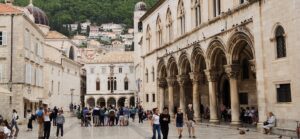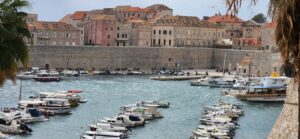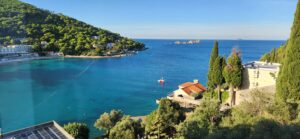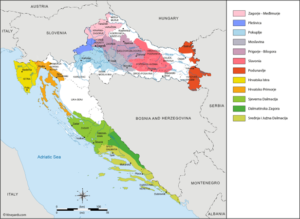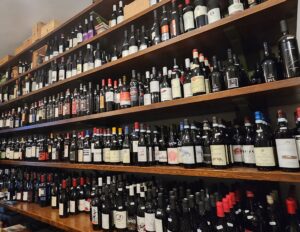There is a town 13 km south of Vacqueyras and 22 km east of Châteauneuf-du-Pape in the south of France, which one might think it would be the center of the local wine trade. In fact there are some nearby wineries, but they’re only part of the generic Mont Ventoux appellation. The town is Carpentras and it is famous, but not for wine. It is the place to go for another French specialty: black truffles.
These delicacies are prized by chefs and home cooks for their exquisite aroma of…what? Some say onions, others cabbage or forest floor. They are earthy, mushroomy, wild and ultimately indescribable. Some people like them in everything from salads to sauces; others don’t like them at all. The people of Carpentras like them because they sell a lot of them, at rather high prices.
The Carpentras truffle market. Photo courtesy of See Provence.
If you are in Provence on a Friday between late November and early March, you can visit the truffle market and then dine at any of the nearby restaurants all of whom, so it seems, specialize in three course truffle menus.
There are other reasons to visit the town and its surrounding area the rest of the year. As noted, Carpentras is at the foot of Mont Ventoux (Mount Windy, in English, a name very well earned). If you ever drive to the top of Mont Ventoux, you will encounter a lot of goats on the road on your way up and on the top of the mountain you’ll see the regional weather station. One of the best known wines from this appellation is La Vielle Ferme, which has been internationally popular for over 40 years. From what we’ve tasted, there’s been a great improvement in recent years and Mont Ventoux wines are a good value for the money. Wine tasting here is very special, with this mammoth mountain hovering over you.
There are quite a few in-town attractions in Carpentras, but they are similar to many other spots in French Wine Country. There’s a Roman arch, a former hospital (Hôtel Dieu) turned library that has architectural interest. A cathedral. Boutiques. Interestingly, Carpentras was once a center of Jewish population and still hosts France’s oldest synagogue, in use since 1367.
Aside from the truffles, there are year-round markets featuring fruits and flowers. The town is also known for a hard candy called berlingots, striped hard confections that were once thought to have medicinal value. Anyplace that’s known for truffles, candy and wine has to be worth a visit!
A typical Carpentras Café. Photo courtesy of Booking.com.
What sets Carpentras apart, in our opinion, is the lifestyle. It is what you would expect a Provençal market town to be. The town seems dedicated to la belle vie, with seemingly innumerable cafes and restaurants. In good weather, which is most of the year, the terrasses are always full with people having a coffee, a glass of (local) wine, a lunch, a snack, an aperitif, a dinner, a digestif. In other words, whatever time of year that you are there, you’re welcome to take a seat and feel that you’ve arrived in the heart of Provence. Because you have.
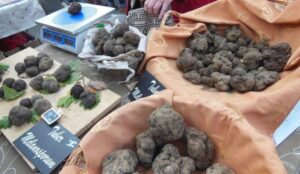
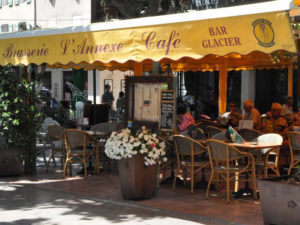


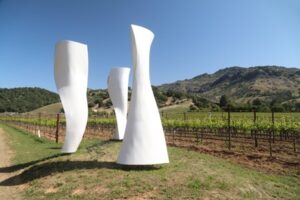
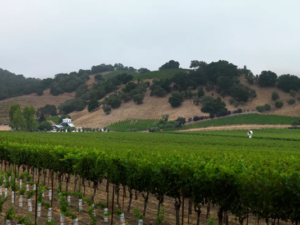
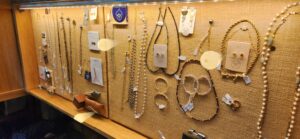

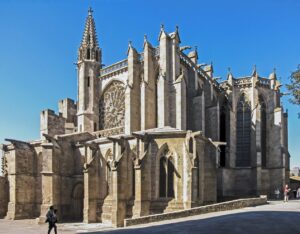

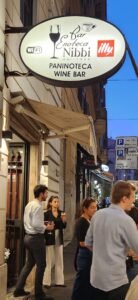

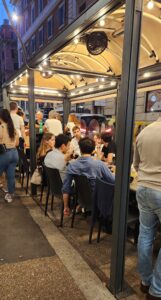 ething going on. We’ve seen large parties, with bottles and platters seeming to arrive every ten minutes. There was a fellow on his PC writing what must have been the Great Italian Novel, made up of equal parts of inspiration, wine and cigarettes. And there was a woman enjoying a glass of wine by herself without getting hassled (try that in New York!).
ething going on. We’ve seen large parties, with bottles and platters seeming to arrive every ten minutes. There was a fellow on his PC writing what must have been the Great Italian Novel, made up of equal parts of inspiration, wine and cigarettes. And there was a woman enjoying a glass of wine by herself without getting hassled (try that in New York!).